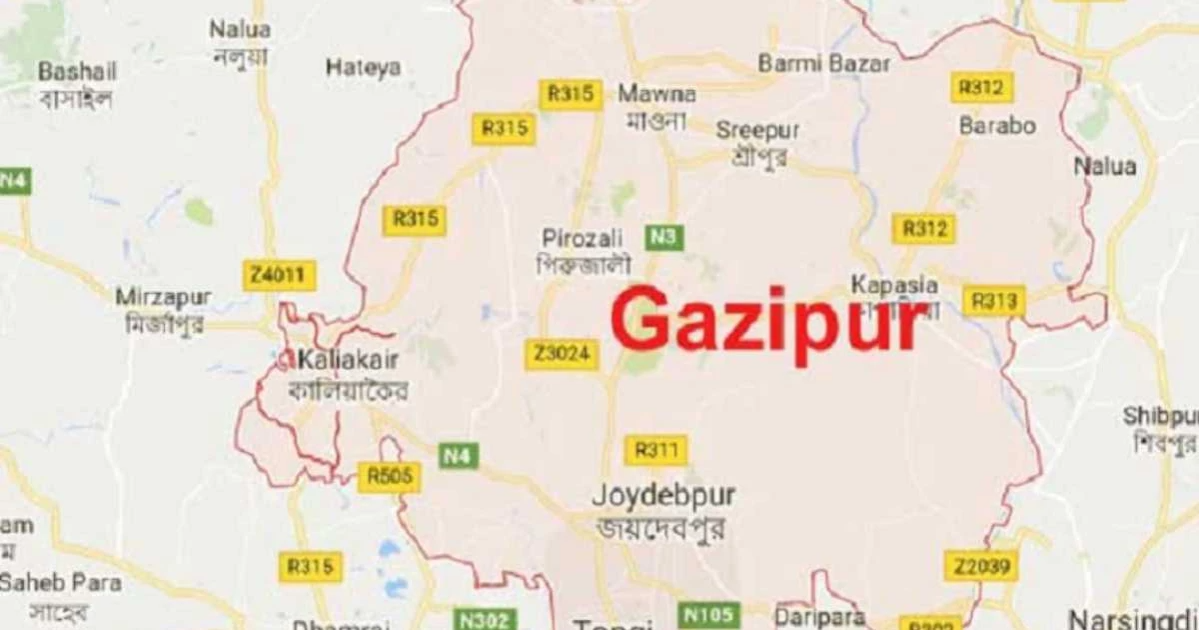

Gazipur has become a striking example of ecological degradation in Bangladesh in recent years, with 60 per cent of forest land and 50 per cent of water bodies converted for other purposes over the past two decades due to unregulated urbanisation and industrialisation, reports UNB citing a recent study.
Forest-covered land in Gazipur has plummeted from 39,943 hectares in 2000 to 16,174 hectares in 2023, marking a decline of 59.51 per cent.
Similarly, the area of water bodies has fallen by 51.42 per cent, shrinking from 11,462 hectares in 2000 to 5,568 hectares in 2023.
The study, titled “Environmental State of Gazipur District: Consequences and Excursion,” was conducted by the River and Delta Research Centre in collaboration with the Bangladesh River Foundation, Prokriti O Jibon Foundation, and the Bangladesh Environment Lawyers Association (BELA).
Standards mandate that areas should maintain 20-25 per cent forest coverage and 7-14 per cent water coverage. But, Gazipur now has just 9.49 per cent forest coverage and 3.27 per cent water coverage.
The report highlights a significant rural-to-urban migration in Gazipur, with an urban population growth rate of 10.51 per cent, while the rural population has declined by 2.05 per cent.
This migration has been driven largely by industrial employment, which now engages 61.52 per cent of the working-age population.
Industrial expansion in the district has surged, with the number of industrial areas more than doubling between 2000 and 2023.
This growth has exacerbated land resource contamination and contributed to the encroachment on forests and water bodies.
In 2000, the district's land was distributed as follows: 23.44 per cent forest, 6.73 per cent water bodies, 50.21 per cent settlement, 5.21 per cent industrial areas, 10.21 per cent agricultural areas, and 3.19 per cent open space.
By 2023, these figures had changed significantly, with settlement coverage increasing to 65.83 per cent and industrial areas to 8.73 per cent. Conversely, forest coverage dropped to 9.49 per cent, water bodies to 3.27 per cent, agricultural areas to 11.92 per cent, and open space to a mere 0.77 per cent.
Over the last two decades, approximately 23,769 acres—or 59.5 per cent—of forest cover have been lost in Gazipur due to unchecked development.
Gazipur’s rivers, canals, and wetlands, essential to its ecosystem and economy, are under severe threat from pollution and encroachment.
The study identified 247 major encroachment sites and 161 active pollution points in key water bodies, including the Turag, Labanda, Tongi, Mogor, and Chilai rivers.
The Turag River, for instance, suffers from industrial runoff from Markas Beel, while the Labanda River is overwhelmed by waste, including plastic facilities, 15 municipal waste lines, and 39 visible industrial waste lines.
Encroachment has also significantly affected Mogor Khal, with 34 incidents recorded, primarily involving commercial activities and soil filling.
Illegal brick kilns along the Turag River further aggravate the situation, contributing to pollution and encroachment. Meanwhile, traditional livelihoods such as farming and fishing face mounting threats.
The study recommended immediate action from municipal and national authorities to address Gazipur’s ecological crisis.
Stronger environmental policies and enforcement mechanisms are crucial to prevent further degradation and restore the district’s natural balance, it advised.


 For all latest news, follow The Financial Express Google News channel.
For all latest news, follow The Financial Express Google News channel.